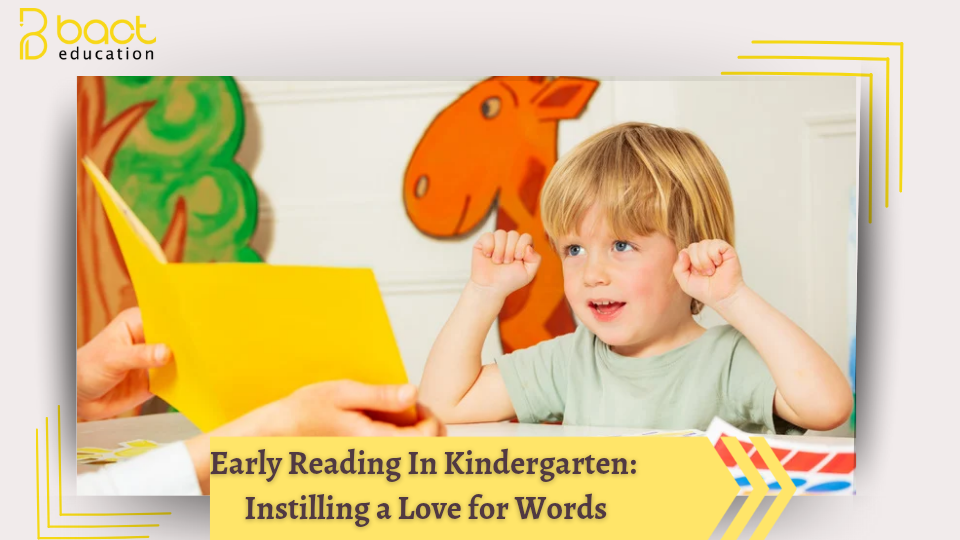Early Reading In Kindergarten:
Instilling a Love for Words
Reading is the primary key to the world of knowledge, serving as the bridge that allows a child to transition from their small worlds to broader horizons of imagination, understanding, and thought. In the kindergarten stage, when the first seeds of awareness begin to take root, early reading emerges as an effective means to cultivate a love for words In children’s hearts.
Early reading is one of the most Important keys that open doors to learning and exploration for children. Through stories and picture books, the child’s journey Into the world of words and meaning begins, contributing to the development of their vocabulary, expanding their Imagination, and enhancing their social and emotional skills. Here, the role of early years practitioners as guides and supporters of this linguistic and cognitive growth becomes evident.
Reading in the Early Years: More Than Just Letters
In their early years, children do not just read letters; they read emotions, discover rhythm, and feel secure when a parent or teacher shares a bedtime story or an engaging reading activity In class. This sensory and emotional experience leaves a profound impact, establishing a positive connection within them with books and words. They learn to listen, pay attention, Interpret images, understand context, and anticipate events. Additionally, reading helps develop pre-writing skills, such as recognizing the direction of reading, linking words to images, and using vocal expressions to comprehend meanings.
Instilling a Love for Words: Why Start in Kindergarten?
The early years of a child’s life are a golden period for brain development and the formation of attitudes. Children at this stage are naturally eager to explore the world around them, and reading provides a fun and safe means for this exploration. When a child connects books with fun and stories with emotions, they form a positive relationship with language and begin to love words.
The Role of Early Years Practitioners In Planning Reading Activities
The role of early years practitioners goes beyond simply reading stories to children; it extends to the intentional planning of reading activities that align with children’s needs and developmental levels. Below are some key roles:
- Choosing Appropriate Books:
Books for young minds and big hearts
Selecting age-appropriate books is crucial. Kindergarten books should be filled with pictures, contain short sentences, use simple language, feature engaging illustrations, and cover topics relatable to children, such as animals, family, friends, and emotions. Interactive books (such as sound books, touch-and-feel books, and fabric books) enhance children’s engagement and capture their attention. Additionally, cultural and linguistic diversity should be considered.
- Creating a Reading Environment:
A reading corner in the activity hall should be rich in books, comfortable cushions, and story-related toys, inviting children to interact with books in a comfortable and exploratory atmosphere.
- Planning Post-Reading Activities:
The practitioner connects the story to activities through drawing, role-playing, or language games, which enhances comprehension and broadens the learning experience.
- Involving Parents:
The practitioner encourages parents to read to their children at home and provides them with strategies and tips to help make reading a part of the family routine.
- Considering Individual Differences:
The practitioner observes each child’s development in language skills and offers additional support to those in need while promoting independence in handling books for those who are more advanced.
Early reading is a seed planted in preschool that grows with the child and bears fruit in the coming years. When early years practitioners approach this task with creativity and love, they not only teach children to pronounce words but also instill in them a love for them. Thus, generations of readers, thinkers, and expressive individuals are built from a young age.

